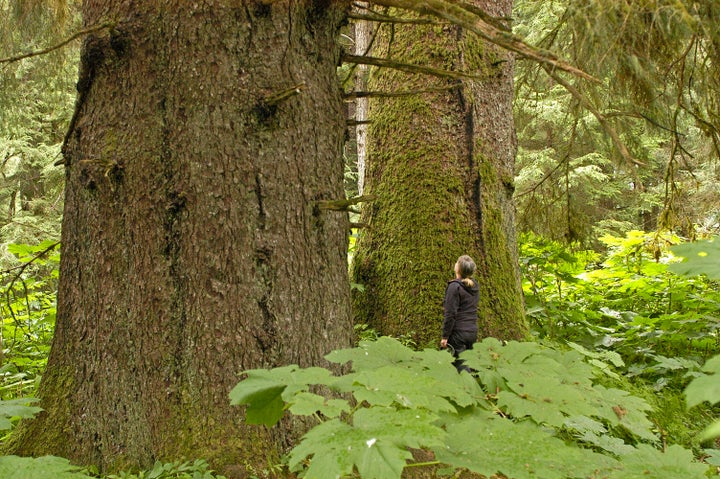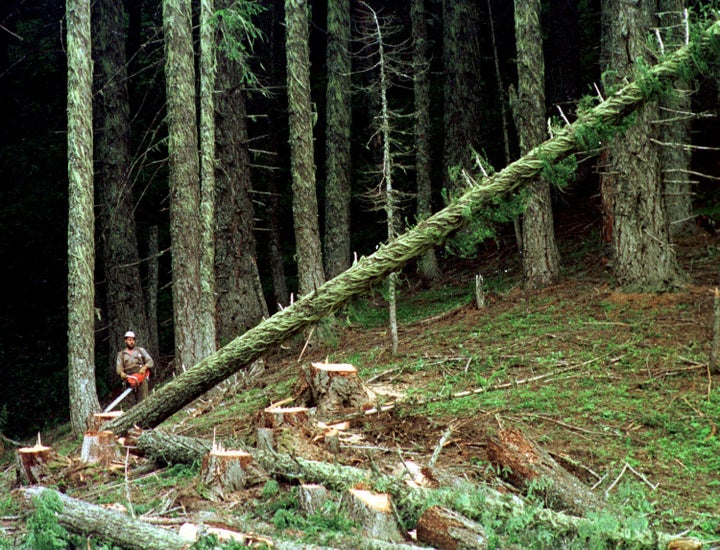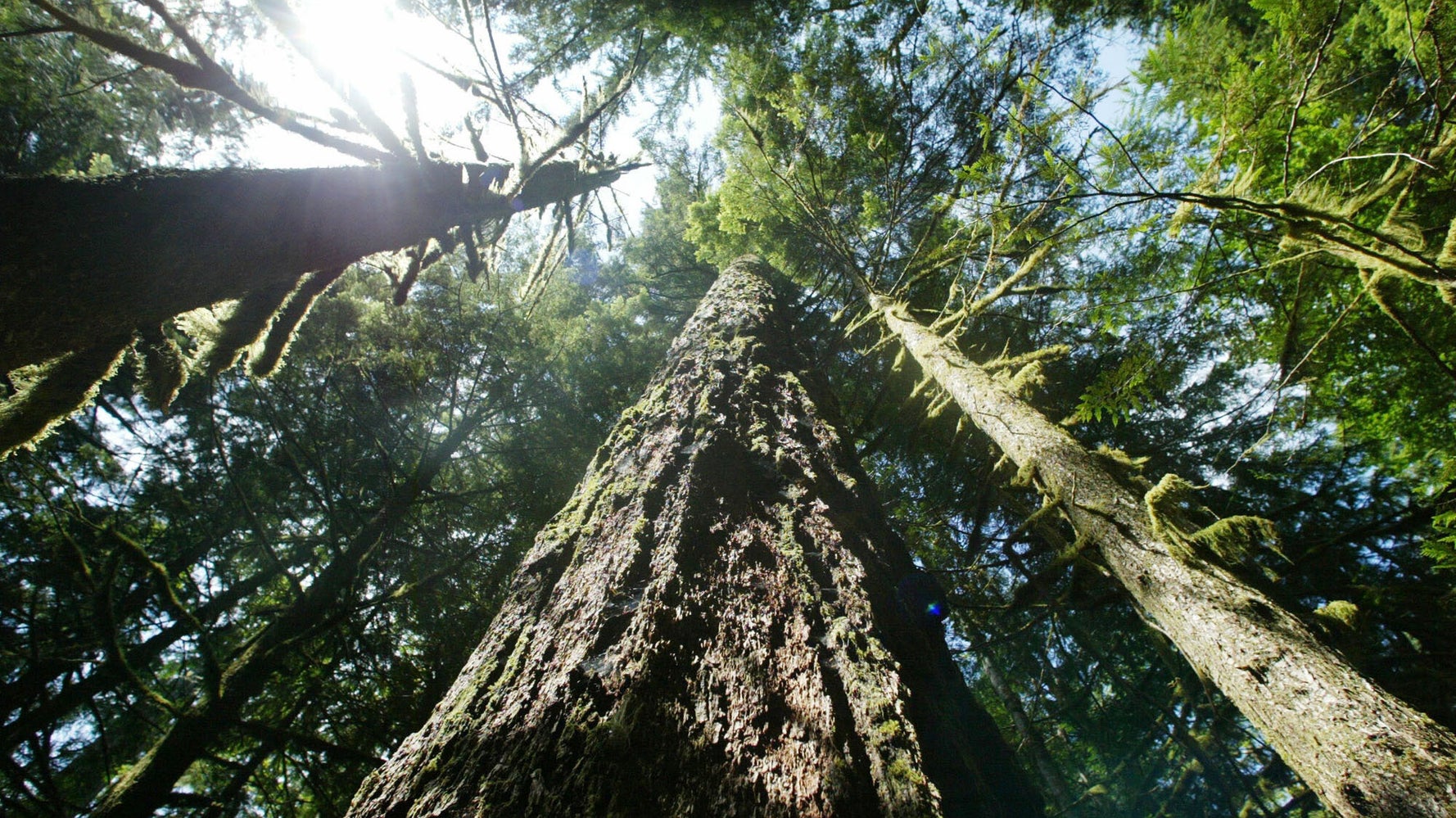A group of U.S. forest ecologists, climate scientists and conservationists warn that they see a “big link” between President Joe Biden’s rhetoric about the urgent need to combat deforestation and the policies he enforces at home.
Commenting on his final day at COP26, the United Nations climate summit in Glasgow, Scotland, Biden praised the $ 550 billion in climate spending included in his Build Back Better plan, which broke through Congress and welcomed the new 100 countries. promise stop deforestation by the end of the decade.
“Preserving forests and other ecosystems can and must play an important role in meeting our ambitious climate goals as part of the net zero emissions strategy we all have,” Biden said on Tuesday. “The United States will lead by our example at home and support other forested and developing countries in designing and achieving ambitious measures to conserve and rebuild these carbon sinks.”
His comments came a day after the White House released a 65-page record long-term strategy to reduce greenhouse gas emissions, which includes a term that raises the eyebrow about carbon removal from forests: “Permanent forest lands, including large parts of our western public lands, now have older forests that retain less CO2 and are more vulnerable to natural disturbances. “
The line left “a lot of people – excuse my French -‘ What the hell! ’,” Said Steve Pedery, director of environmental protection at the environmental organization Oregon Wild.
Pedery said that in the strategy paper, they appear to be floating logging – more specifically, cutting down mature tree formations to plant younger ones – than solution climate change and climate fire.
“What’s next, the resurrection of ‘clean coal’ and the warning of the dangers of wind cancer?” he said.
Old forests sequester huge amounts of carbon in trees and soil, and scientists say protecting those few that remain intact will prove crucial to achieving climate and biodiversity goals.
Buddy Mays via Getty Images
Three forest scientists interviewed by HuffPost – William Moomaw, Professor Emeritus of International Environmental Policy at Tufts University, Chad Hanson, Forest Ecologist at Earth Island Institute at the John Muir Project, and Dominick DellaSala, Chief Scientist in the Wild Heritage Forest Advocacy Group – they shared Pedery’s interpretation of language.
The strategic document is “interspersed with holes in forestry,” DellaSala said.
“We have three ships at night and we don’t have any skippers at the helm,” he added. “We have a lot of interruptions. … What the hell is going on? It’s a shame on the world stage if people can read between the lines. “
Moomaw is a five-time lead author of the Intergovernmental Panel on Climate Change reports and is considered the father of “reforestation,” which he defines as “growing forests to reach their ecological potential for carbon sequestration and biodiversity”.
Moomaw said there is a point at which the growth and rate of carbon storage reaches a peak in the forest, usually in the middle ages of trees. Because of this, wood stakeholders argued that ancient forests should be cut down and replaced with young trees. Moomaw called it “magic thinking.”
“These younger trees from now until 2050 will never accumulate from the atmosphere almost as much carbon as the older trees would at the same time of growth,” he said. “In other words, 30 years of growing an older forest will remove more carbon from the atmosphere by 2050 than planting new trees and letting them grow for 30 years.”
All three said Biden’s climate strategy documents parrots that it is the industry that is talking about replacing old trees with young ones. This is a situation that ignores the initial carbon release when felling mature trees and operates on a timeline that contrasts with the emission reductions that scientists believe are needed to avoid catastrophic planetary warming.
“Whenever you take trees from the woods, you put most of that carbon into the atmosphere,” DellaSala said.
“It’s all about the next few decades,” Hanson said. “The point is that we need to dramatically increase the protection of existing forests – mature forests, old forests, primary forests.”

As before HuffPost reported, conservationists became disillusioned with the Biden administration early on due to a lack of a strong commitment to stop cutting down mature and old temperate forests in Alaska and the Pacific Northwest. But in July, Biden moved to in reverse The Trump administration is dismantling the protection and completing extensive logging of old trees in Alaska’s Tongass National Forest, the world’s largest pristine temperate rainforest.
After celebrating Tongassa’s decision as a sign that Biden is serious about using untouched forests as a tool in the fight against climate change, many are feeling upset again.
This week, Congress is expected to vote on the president’s $ 1.2 trillion bilateral infrastructure bill and an accompanying $ 1.75 trillion spending package. Both pieces of legislation include several provisions that some experts and advocates argue will increase logging on federal and private land, undermine huge investments in clean energy in laws, and worsen global warming.
As of Thursday, more than 200 climate scientists and forest ecologists have signed a letter calls on Biden and Congress to remove provisions, including $ 14 billion in Build Back Better for “hazardous fuel reduction projects” on national forest land and powers in the Infrastructure Act to reduce the risk of wildfires to 30 million hectares of federal land.
In a letter from Moomaw, Hanson, DellaSala and others, the group argues that the forest provisions of both laws are “promoted as fire control measures and climate solutions, but commercial logging is carried out under the guise of‘ thinning ’and‘ reducing consumption ’. fuel “. “usually removes mature, fire-resistant trees needed for forest resilience.”
“We need the administration and Congress to adopt policies that will significantly reduce annual greenhouse gas emissions from logging and fossil fuels and increase the accumulation of carbon in our forests,” the letter said. Other major signatories include Beverly Law, an emeritus professor at Oregon State University and an expert on the carbon cycle in the forest, and William Ripple, a climate scientist and professor of ecology in the state of Oregon.
The White House did not immediately respond to HuffPost’s request for comment.

Hanson has a lot of critics. Sacramento bee reported last month about a series of articles in scientific journals in which firefighters criticized his opposition to dilution as a tool to reduce the risk of wildfires. One scientist, Susan Prichard, a fire ecologist at the University of Washington, went so far as to compare Hanson and his allies to climate change deniers.
Environmentalists also disagree on the idea that Biden’s Build Back Better plan would negatively impact U.S. forests. In the interview with VoxCollin O’Mara, executive director of the National Wildlife Association, called the bill “the most important investment ever in our national forests” and “a surprisingly big deal.”
As part of the new COP26 initiative, Biden said the U.S. will spend up to $ 9 billion on international efforts to stop deforestation and protect forest ecosystems. Funding should be approved by Congress, and House Majority Leader Steny Hoyer (D-Md.) Has already presented legislation to establish a $ 9 billion trust fund.
More than 100 countries, representing 85% of the world’s forests, have signed the pact. But there are many reasons to doubt whether this will lead to real change. The New York Declaration on Forests, adopted at the UN Climate Conference in 2014, set the goal of halving deforestation by 2020 and ending it completely by 2030. Instead, deforestation continued to increase.
The Council loses its assessment 27 football fields trees to deforestation every minute.
As early as April, dozens of environmental groups, including the National Resource Defense Council and Earthjustice, called on the Biden administration to impose a moratorium on all aging in the Pacific Northwest and Alaska and to turn the protection of carbon-rich forests into a central part of its push. COP26. More than 120 green groups renewed these calls in a letter to the White House dated 28 October.
“It’s not enough to just put pressure on developing countries to protect older forests and rainforests – the U.S. needs to take important steps to preserve and restore carbon-rich forests and trees in all of our home forest species,” they wrote last week.
.
Source
